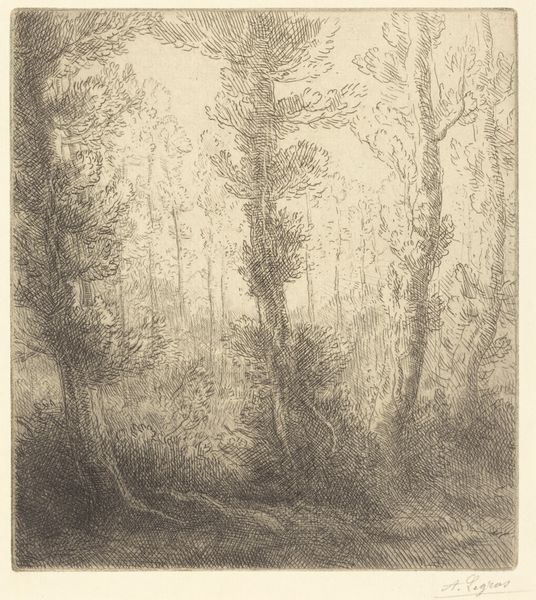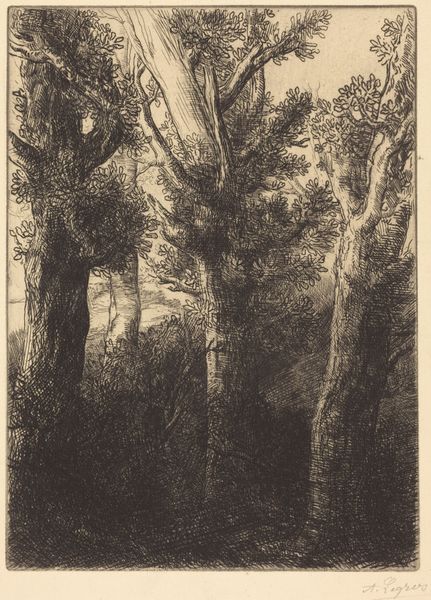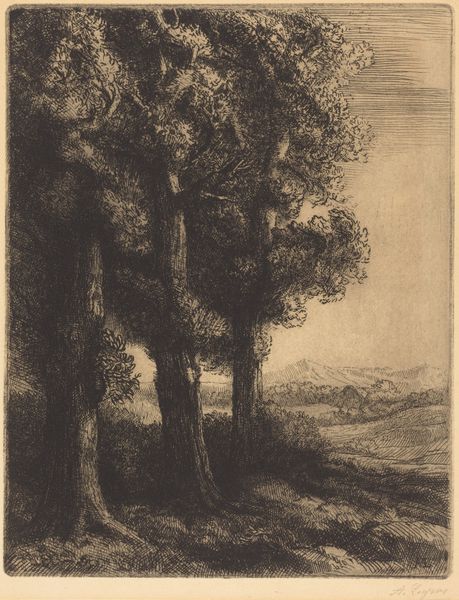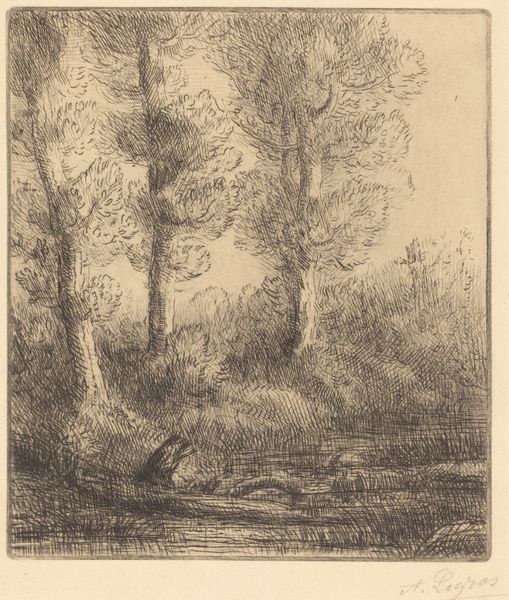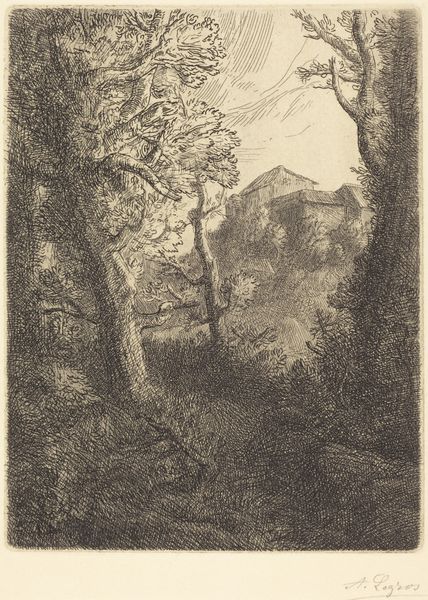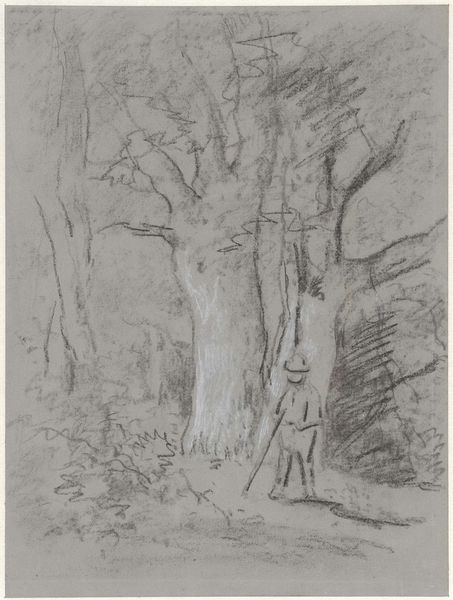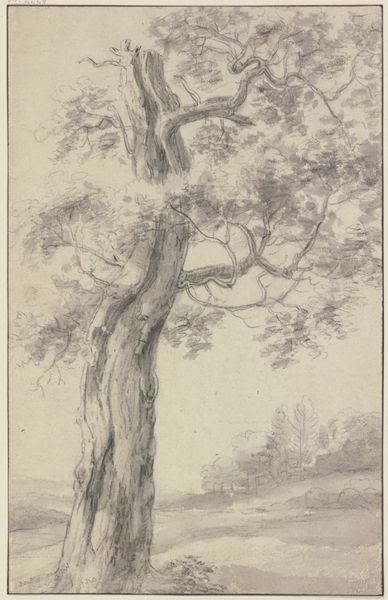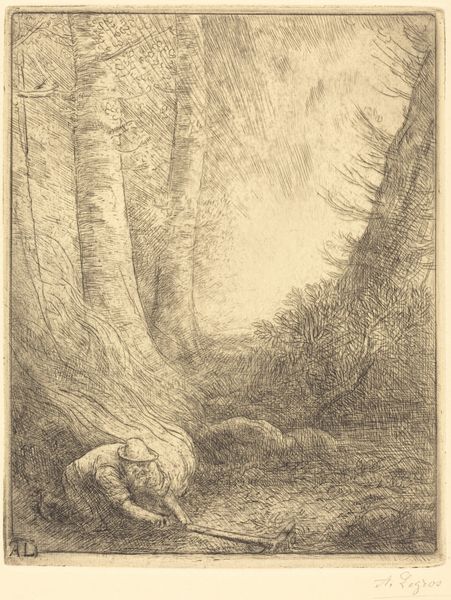
drawing, print, etching, pencil
#
drawing
# print
#
etching
#
pencil sketch
#
landscape
#
pencil drawing
#
pencil
#
realism
Copyright: National Gallery of Art: CC0 1.0
This is Alphonse Legros’ etching ‘Study for the Prodigal Son’, created in 1897. Legros, born in France, spent much of his career in England, where he revived interest in traditional printmaking techniques like etching. Here, the biblical story of the prodigal son is steeped in the imagery of poverty and atonement. Notice the figure at the foot of the trees; the son’s posture communicates shame, defeat, and repentance. The dense thicket of trees almost smothers the figure. It suggests that nature is indifferent to the son's suffering, highlighting his isolation. Legros seems to be interested in stripping away any glamour from the story. This treatment aligns with broader Victorian anxieties about moral decay and economic hardship. But it also speaks to something deeply human: the universal search for forgiveness. As you consider this work, think about the intersections of faith, redemption, and human vulnerability.
Comments
No comments
Be the first to comment and join the conversation on the ultimate creative platform.
